1 Do Treadmills Use a Lot of Electricity?
Treadmills rely on electric motor engines to adjust their speed and power during use, so some energy consumption is inevitable. However, the amount of electricity used depends on several factors, such as the type of motor and the intensity of your workout.

Electricity consumption depends on various factors.
According to manufacturers’ tests, a treadmill with a 2 HP DC motor running at a maximum speed of 12 km/h will consume around 1500 W of electricity.
If you operate the same 2 HP treadmill at a moderate speed of 6-8 km/h (using about two-thirds of its power), the electricity consumption drops to approximately 1000 W.
As you can see, using the treadmill for a moderate duration of 20-30 minutes per day won’t result in excessive electricity consumption.

Maintaining a daily workout routine of 20-30 minutes is beneficial for your health and won’t result in high electricity costs.
2 Factors Affecting Electricity Consumption in Treadmills
Engine Power
The power of the treadmill’s engine directly impacts its electricity consumption. A higher power rating means the engine can withstand greater force, achieve higher maximum speeds, and, consequently, consume more electricity.
Specifically, treadmills with 1 HP engines consume about 750 W of power, suitable only for individuals weighing under 50 kg. As a result, these machines are not very popular among consumers.
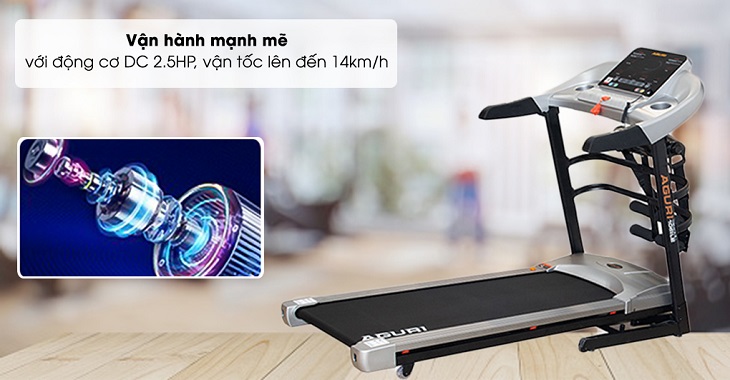
Aguri AGT-106LE Treadmill features a 2.5 HP DC motor for enhanced performance and improved workout experience.
Treadmills equipped with 2-2.5 HP DC motors will consume around 1500-2000 W of electricity when operated at maximum running speed. Machines with more potent engines, such as those with 4-5 HP or higher, will demand even higher electricity consumption.
Weight
Exceeding the treadmill’s maximum weight capacity can also increase electricity consumption. When the machine bears a heavier load, its engine must work harder, leading to higher power output and, consequently, higher electricity consumption.
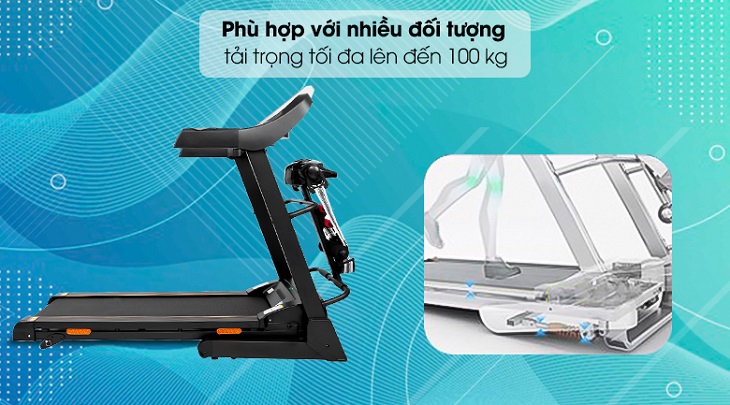
Airbike Sports T80 Treadmill has a maximum weight capacity of 100 kg.
Exercise Duration
To improve your physical health effectively, it’s essential to choose a workout intensity suitable for your fitness level. Experts recommend exercising for about 20-30 minutes daily on your treadmill to enhance your stamina and energy levels.
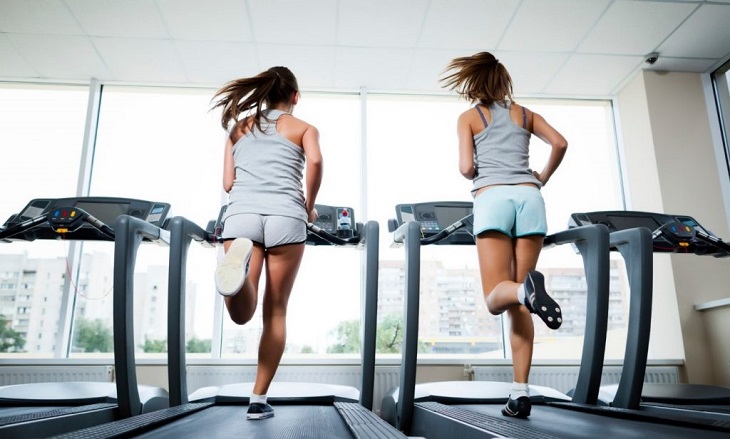
Prolonged exercise durations can lead to excessive electricity consumption and potentially harm your health, affecting your cardiovascular system, muscles, joints, and more.
Exercising for extended periods on the treadmill, especially at high intensities, can not only result in higher electricity consumption but also pose health risks.
Running Mode
Treadmills typically offer various running modes, including walking, jogging, normal running, and high-intensity running. The speed settings on these machines usually range from 0.4 to 14 km/h. As the treadmill’s speed increases, so does its electricity consumption compared to its initial state.

Aguri AGT-115L Treadmill offers a range of workout modes to suit different fitness needs.
Belt Tension (Curoa)
The curoa , or treadmill belt, plays a crucial role in transmitting energy for smooth machine operation. If the belt is too tight, it increases friction between the engine and the belt, leading to accelerated wear and reduced belt elasticity. This, in turn, increases the load on the engine and results in higher electricity consumption.
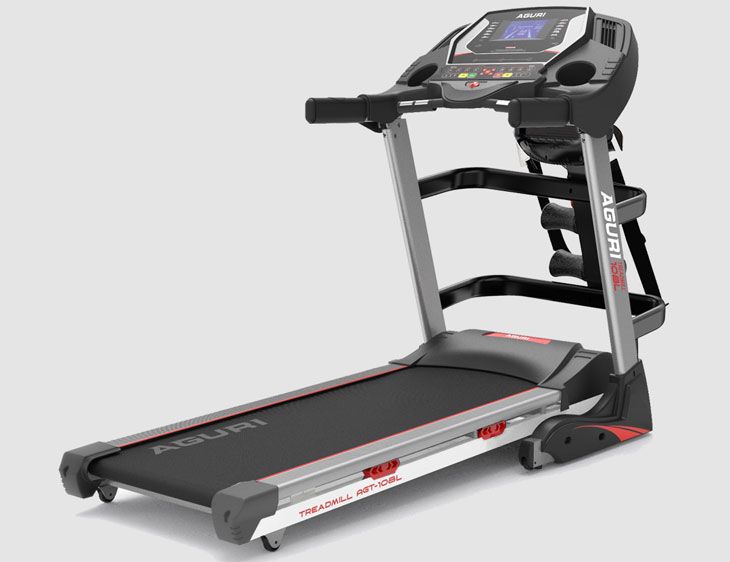
Aguri AGT-108L Treadmill boasts high load-bearing capacity, contributing to energy efficiency during operation.
Proper installation and regular belt tension checks are essential for energy conservation and optimal performance during workouts.
Large Screens and Additional Electrical Devices
Treadmills feature screens that display workout parameters like incline, time, and speed. Some models even have LED touchscreens, which consume slightly more electricity than standard displays.

Aguri AGT-117L Treadmill is equipped with a 5-inch LCD screen for easy parameter monitoring.
While the treadmill’s screen doesn’t consume much electricity, using additional features like massage functions, music playback, or video viewing simultaneously will increase overall electricity consumption.
3 Tips for Energy-Efficient Treadmill Usage
Use 220V Power Supply
Treadmills should be connected to a 220V power supply to ensure stable engine operation. Using a power supply with a significantly higher or lower voltage can affect the machine’s performance.

Using a 220V power supply helps maintain stable engine performance in treadmills.
Unplug When Not in Use
Even when idle, treadmills consume a small amount of electricity to maintain their internal components. Therefore, always unplug the machine and completely disconnect it from the power source when not in use to minimize electricity consumption.

Unplug the treadmill even when it’s not in use to reduce standby power consumption.
Choose Suitable Exercise Times for Each Family Member
Selecting the right time to exercise is crucial for getting the most out of your treadmill workouts. Morning, noon, or evening workouts all offer unique benefits for your health. Maintaining a consistent exercise routine and sticking to your schedule is an effective way to lose weight and improve your fitness.
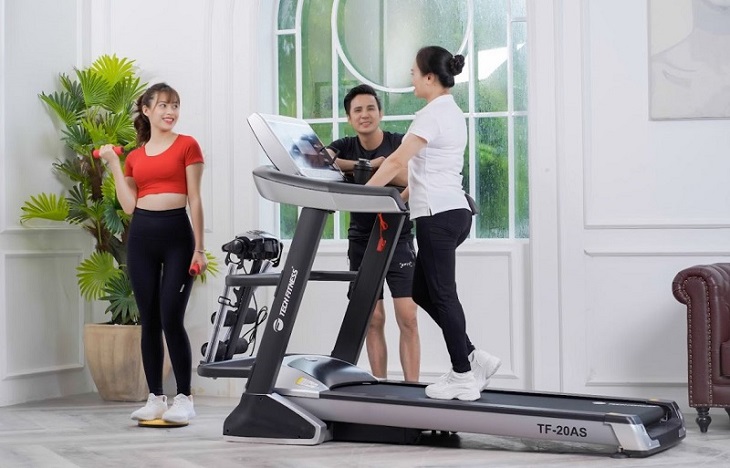
Choosing workout times that align with each family member’s schedule ensures efficient treadmill usage.
Regular Cleaning and Maintenance
Neglecting to clean your treadmill regularly can lead to dust and dirt buildup, especially in the moving parts like the conveyor belt. Over time, this can reduce friction, affecting the machine’s speed and potentially causing damage. After each use, wipe down the treadmill with a clean cloth and use a brush to remove debris from the running surface. Additionally, regular lubrication improves performance, prolongs the machine’s lifespan, and contributes to energy efficiency.
How to Cut Down on Refrigerator Energy Consumption
Do you want to save money on your electricity bill? We’ve got solutions! Read on to learn our top tips that can help you reduce your power consumption when running your refrigerator.
Important Guidelines to Follow When Utilizing a Washing Machine’s Dryer Function
If you’re looking for ways to maximize the efficiency of your washing machine and dryer, we’ve got just the advice for you! Follow a few simple guidelines and you can increase the performance of your machines, save time and energy, and reduce noise levels. To get started, here’s a look at the best practices for using the dryer function of your washing machine!
Maximizing Durability and Energy Efficiency with High-Speed Kettles: Tips and Advice
Are you an electric kettle aficionado? If so, you’ll appreciate Ði?n máy Xanh’s latest offering. We’ve compiled comprehensive instructions to help you make the most of your electric kettle, including tips on how to prolong its life as well as maximize energy savings. Let’s get your kettle expertise up to date!
Increases in Energy Efficiency Achieved with Slow Cookers
As the demand for convenient cooking continues to rise, more and more families, especially those with young children, are turning to slow cookers as a way to create healthy and tasty meals with minimal effort. With so many settings and benefits, slow cookers offer a great solution for busy households.

























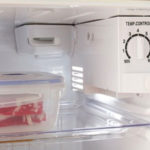 Consumption
Consumption











